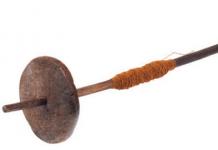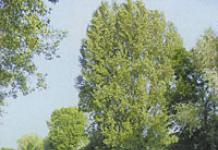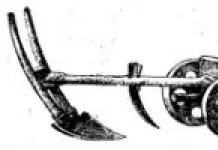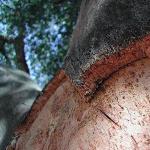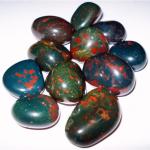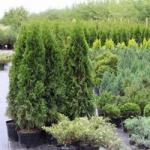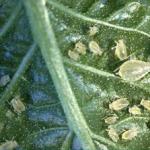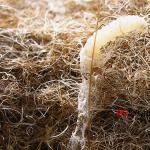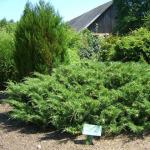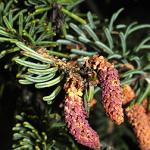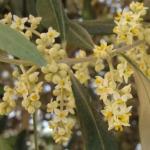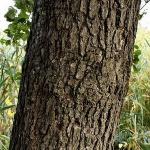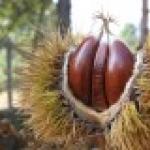The following main functions of plant stems can be mentioned:
movement of water and dissolved minerals from roots to leaves;
movement of organic substances from leaves to all other plant organs (roots, flowers, fruits, buds and shoots);
removal of leaves to sunlight and support function.
In connection with the functions they perform, the stems of higher plants, especially angiosperms, acquired their characteristic internal structure.
As you know, plants have woody and herbaceous stems. In terms of their internal structure, they differ from each other by the stronger development of some tissues and the underdevelopment of others. The clearest picture of the internal structure of the stem can be seen in the cross section of the tree.
The stem of a woody plant usually consists of four layers: bark, cambium, wood and pith. Moreover, each layer can include cells of different tissues. Thus, the bark contains peel, cork, bast fibers, sieve tubes and other tissues.
In young stems of woody plants, the surface remains skin. Like the skin of leaves, it has stomata through which gas exchange occurs. Under the skin or, if there is none, on the surface is cork. In a number of trees, the cork forms a fairly thick layer. There is a plug for gas exchange lentils, which are tubercles with holes. The cells of the skin and cork belong to the integumentary tissue. They protect the internal parts of the stem from damage, penetration of pathogens, and drying out.
Under the plug there may be a so-called primary cortex, and already under it is bast, which consists mainly of sieve tubes And bast fibers. Sieve tubes are bundles of living cells. Organic substances that were synthesized in the leaves during photosynthesis move along them. The cells of bast fibers have thick walls. Bast fibers are quite strong; they perform a mechanical support function.
Under the bark there is a thin layer cambium, which is an educational fabric. Its small cells actively divide during the growing season of the tree (from spring to autumn) and provide thickening of the stem. The resulting cambium cells, which are located closer to the cortex, differentiate into phloem cells. Those cambium cells that are closer to the wood become wood. Over the summer, more wood cells are formed than bast cells. On a tree cut, each year's wood cells are separated from each other by darker, smaller autumn wood cells. Thus, the growth rings are visible.
Under the cambium is wood, which usually makes up the bulk of the stem of a woody plant. Wood contains vessels. An aqueous solution moves along them from the roots. Vascular cells are dead. In addition to vessels, wood contains other types of tissues. So there are cells with thickened, strong walls.
core usually consists of loose storage tissue, consisting of large cells with thin walls.
Phellems. First, a layer of phelloderm cells is formed, which forms a layer of phellogen cells. Phelogen cells are divided into two parts: upper and lower. The upper cell (phellema) immediately dies and becomes covered with a thick layer of suberin (a substance that does not allow water and gases to pass through). The lower cell continues to divide, forming a phellem. In some plants (for example, pine, tulip tree, euonymus), the cork consists of thin-walled suberized cells and phelloids - layers of cells with lignified, but not suberized walls.
The plug performs the following functions:
- protection against mechanical damage,
- protection against penetration of pathogenic organisms,
- protection from drying out,
- mechanical support due to the rigidity of the phellem cells.
see also
Notes
Literature
- Biological encyclopedic dictionary / Ch. ed. M. S. Gilyarov; Editorial team: A. A. Baev, G. G. Vinberg, G. A. Zavarzin and others. - 2nd ed., corrected. - M.: Soviet Encyclopedia, 1989. - P. 506. - 864 With. - 150,600 copies. - ISBN 5-85270-002-9
Wikimedia Foundation. 2010.
See what “Cork (biology)” is in other dictionaries:
Phellema, the outer part of the plant's secondary integumentary periderm tissue. It develops from phellogen cells (cork cambium) when they divide in the tangential direction (parallel to the surface of the axial organ). In woody plants on... ...
The cell is an elementary unit of structure and vital activity of all living organisms (except for viruses, which are often referred to as non-cellular forms of life), possessing its own metabolism, capable of independent existence,... ... Wikipedia
The stinging hymenoptera are the most highly organized representatives of the order. They have the most amazing building instincts, amazing examples of caring for offspring and complex forms of social life. To that… … Biological encyclopedia
This suborder is much larger than the first. As reflected in the name of the suborder, the food connections of its representatives can be very diverse. It includes the bulk of Coleoptera and is divided into a large number of families.... ... Biological encyclopedia
This term has other meanings, see Cell (meanings). Human blood cells (HBC) ... Wikipedia
Plant tissues located at the border with the outside. environment. Consist of tightly closed cells. Primary integumentary tissue (epidermis, or epidermis) develops on leaves and young stems. Thick outer the walls of its cells are covered with cuticle,... ... Biological encyclopedic dictionary
- (caulis), the axial part of a plant shoot, consisting of nodes and internodes. It grows in length due to the apical (in the growth cone) and intercalary, or intercalary, meristems. Bears leaves, buds and sporulation organs, in angiosperms... ... Biological encyclopedic dictionary
This term has other meanings, see Emancipation (meanings). Emancipation ... Wikipedia
Lepidoptera are characterized by an elongated eel-like body, which right up to the ventral fins is rounded in cross section. They have a paired lung; small cycloid scales covering their body and partly their head are deeply hidden under... Biological encyclopedia
Much... Wikipedia
Wood is one of those building materials that have been known to mankind since ancient times. The volume of its consumption is growing every year, and therefore many species are on the verge of complete extinction.
The latter also includes cork, which has been used by humans for thousands of years.
It belongs to the oak genus. The difference from its relatives is that by about five years its branches and trunk are covered with thick bark with unique properties. But you can only remove it by the age of 20. Note that this can be done up to the age (of the tree, of course) of 200 years!
After the first collection, it takes at least 8-9 years, during which the bark is restored. A tree aged 170-200 years produces approximately 200 kg of high-quality raw materials.
The peculiarity of this oak is also that it belongs to the evergreen species. The leaves resemble those of Russian oaks, but are covered with a significant layer of fluff underneath. The cork tree itself is quite large: the height can reach 20 meters, and the trunk diameter can be a meter.
Latin name - Quercus suber. It grows at an altitude of no higher than 500 meters above sea level. Most oaks of this type are found in Portugal, which is why the country's budget receives considerable cash injections from the export of cork, which increases its value every year.
Since ancient times, man has known that the cork tree provides this most valuable raw material, and therefore it has been cultivated for a long time. Note that there is a false representative of this genus, Q. crenata, which is quite widespread in southern Europe. Its cork layer is so small that the tree is grown exclusively for decorative purposes.

In Portugal alone, Quercus suber oak plantations cover more than 2 million hectares! In addition, approximately the same amount of territory is used for this throughout Southern Europe.
Every year, all plantations produce more than 350 thousand tons of bark, but this amount has long been insufficient to meet demand. That is why the wild cork tree was almost completely destroyed.
By the way, what is unique about cork as a material? The fact is that it is a structure whose structure resembles a honeycomb in a bee hive.
Each cubic centimeter of this material can contain up to 40 million of these honeycombs, which are separated from each other using partitions made of a cellulose component.
Simply put, each capsule is filled with air, so even a small piece of cork is very elastic. This property gives the material complete waterproofness and the ability to restore its original state even after strong pressure.

This is why balsa wood (a photo of which is in the article) has received such wide appreciation among furniture makers.
In addition, the bark contains suberin (a mixture of fatty acids, waxes and alcohols). It is unique in that it gives the wood fire-resistant and anti-rot qualities. There are known cases when, during forest fires, cork oaks remained completely intact, except for the scorched bark and leaves dried from the heat.
Thus, the bark of the cork tree is a unique material given to man by nature.
In our modern times, construction keeps pace with the times. There are many different finishing materials in the world. Today we’ll talk about wood, which gives us such a wonderful material as cork. It has been used by people since ancient times not only in construction, but also in industry. Bark, which after proper processing turns into a cork, is formed by many plants.
In large quantities sufficient for industrial use, it can be obtained only from three trees: Amur cork (Amur velvet), Chinese oak and cork oak. A cork is the top layer of bark with deep cracks. Thanks to its dead cells impregnated with suberin, it does not allow water or gas to pass through. It is worth getting to know cork oak, which produces such a necessary product.
Balsa tree: description
This plant exudes power, because oak has been considered a symbol of power and greatness since ancient times. The cork tree grows up to 20 meters in height. The crown is tent-shaped with powerful branches. In plantings this plant takes on a cylindrical shape.

The bark on thick branches and trunk is covered with an impressive cork layer. The cork tree leaf is oval or elliptical, 4-7 cm long and 1.5-3.6 cm wide. The leaves can be with small sharp teeth or entire. The top is shiny green, the bottom is gray, densely pubescent. The leaves live for 2 years and then fall off.
Acorns ripen on a short fruiting stalk, 2-3 pieces each. In the first year of the tree's life, it is already possible to harvest acorns. Their size is about 3 cm in length and 1.5 cm in diameter. The plus is gray-pubescent and is 1/2-1/3 the size of the fruit.
Cork tree bark
Cork oak is capable of regenerating layers of bark. The formation of a plug occurs very slowly, in one year it grows to approximately 7-8 mm of a valuable layer.
Oak with such unusual bark grows in areas with extremely hot and dry climates. By rewarding this plant with a cork layer, nature made sure that it was protected from overheating and drying out. Everyone knows how hot and merciless the subtropical sun can be.
The cork bark of the oak tree has small pores that contain air, so it is considered a wonderful insulator and protective layer for the plant.
Where is cork oak found in nature?
The cork tree grows wild in the coastal zone of Portugal. This country is rightfully considered a leader in the production of cork. It is here that the greatest variety of products made from these raw materials is observed. You can buy anything: a bag, a wallet, shoes, souvenirs... It is also known that in 2010, one bride ordered a wedding dress made of cork, in which she walked down the aisle.
Amazing oak plantations are located in Italy, Spain, Morocco, France, Algeria and Tunisia. These plantings occupy an area of about 2-2.5 million hectares. Every year, owners of cork plantations harvest a harvest consisting of 300-360 thousand tons of bark.
Bark collection process
Collecting bark is a very complex and labor-intensive process. Collectors must climb ladders to a great height in order to find a layer of at least 3 cm. Having found the desired place on the tree, the worker makes a transverse cut of the cork around the circumference of the trunk, and the same is made below. Then the top and bottom are connected with one cut going from the top, a wooden device is inserted between the dead bark and the phloem and the cork layer is very carefully separated.
The collected raw materials are stacked in special rooms to dry, where they are stored for several weeks, awaiting the next stage of processing.

On industrial plantations, the first bark harvest is harvested from fifteen-year-old trees. The best cork can be obtained from oak that is between 30 and 150 years old. Only after the third harvest the bark is of the highest quality.
The process of removing bark is considered traditionally manual; this activity was practiced a thousand years ago. Cork wood does not suffer from such treatment if everything is done carefully and correctly. The bark grows back over time and becomes smoother every year, which increases its value. The harvest occurs once every ten years. Considering the fact that this plant can live up to 200 years and even longer, then during its life the cork is collected about twenty times.
Industrial use
As mentioned earlier, cork bark has been successfully used by humanity since ancient times. The peoples of the Mediterranean made shoes from cork and used it in the manufacture of gear. Our ancestors also used it to seal vessels with wine, water, vinegar and oil. Chroniclers of Ancient Rome in their descriptions talk about the use of cork bark in the construction of prefabricated housing as an excellent heat insulator. Such material was especially valued in camping conditions.

In the modern world, cork raw materials have become even more popular. Cork is valued as an interesting finishing and building material. Wallpaper, linoleum, parquet, panels are made from it... Also, light and strong soles, life-saving watercraft, souvenirs are made from this amazing bark... Cork is of considerable importance for winemakers. After all, only through such a high-quality closure can wine breathe for many years.
1What is the significance of the skin and the cork? 2Where is the phloem located and what cells does it consist of? 3What is cambium and where is it located? and got the best answer
Answer from Anastasia Popova[guru]
1) The skin and cork are classified as integumentary tissues. The main function is to protect the plant from mechanical damage, penetration of microorganisms, sudden temperature fluctuations, excessive evaporation, etc.
Epidermis (epidermis, skin) is the primary integumentary tissue located on the surface of leaves and young green shoots. It consists of a single layer of living, tightly packed cells that do not have chloroplasts. The cell membranes are usually tortuous, which ensures their strong closure. The outer surface of the cells of this tissue is often covered with a cuticle or waxy coating, which is an additional protective device. The epidermis of leaves and green stems contains stomata that regulate transpiration and gas exchange in the plant.
Periderm is the secondary integumentary tissue of stems and roots, replacing the epidermis in perennial (less often annual) plants. Its formation is associated with the activity of the secondary meristem - phellogen (cork cambium), the cells of which divide and differentiate in the centrifugal direction (outward) into the cork (phellema), and in the centripetal direction (inward) - into a layer of living parenchyma cells (phelloderm). Cork, phellogen and phelloderm make up the periderm.
The cells of the cork are impregnated with a fat-like substance - suberin - and do not allow water and air to pass through, so the contents of the cell die and it fills with air. The multilayer cork forms a kind of stem cover that reliably protects the plant from adverse environmental influences. For gas exchange and transpiration of living tissues lying under the plug, the latter has special formations - lentils; These are gaps in the plug filled with loosely arranged cells.
2) Bast is a conductive tissue. Another name is phloem. Phloem conducts organic substances synthesized in the leaves to all plant organs (downward current). It is a complex tissue and consists of sieve tubes with companion cells, parenchyma and mechanical tissue. Sieve tubes are formed by living cells located one above the other. Their transverse walls are pierced with small holes, forming a kind of sieve. The cells of the sieve tubes are devoid of nuclei, but contain cytoplasm in the central part, strands of which pass through through holes in the transverse partitions into neighboring cells. Sieve tubes, like vessels, stretch along the entire length of the plant. Companion cells are connected to the segments of the sieve tubes by numerous plasmodesmata and, apparently, perform some of the functions lost by the sieve tubes (enzyme synthesis, ATP formation).
3) Cambium is a secondary educational tissue. Located in the roots and stems of plants. Gives rise to secondary conducting tissues and ensures plant growth in thickness. Cambium also plays an important role in wound healing in plants. If the outer tissues of the stem are damaged, the cambium grows into the damaged area and differentiates into new xylem, phloem and cambium, each of these tissues continuing continuously with the corresponding tissue type in the undamaged part of the plant.
Answer from 3 answers[guru]
Hello! Here is a selection of topics with answers to your question: 1What is the significance of the skin and cork. 2Where is the phloem located and what cells does it consist of? 3What is cambium and where is it located?
